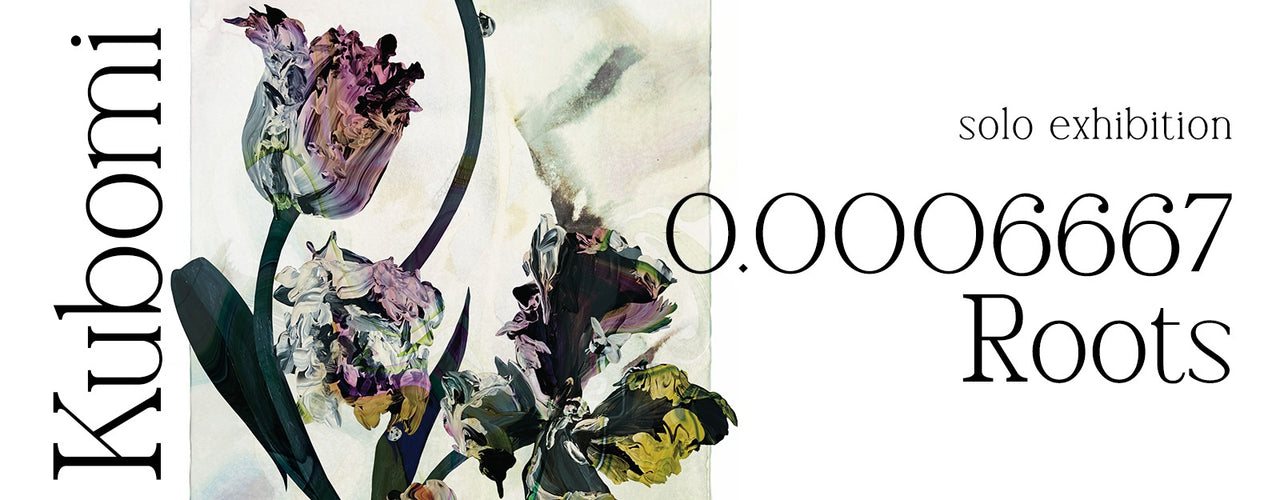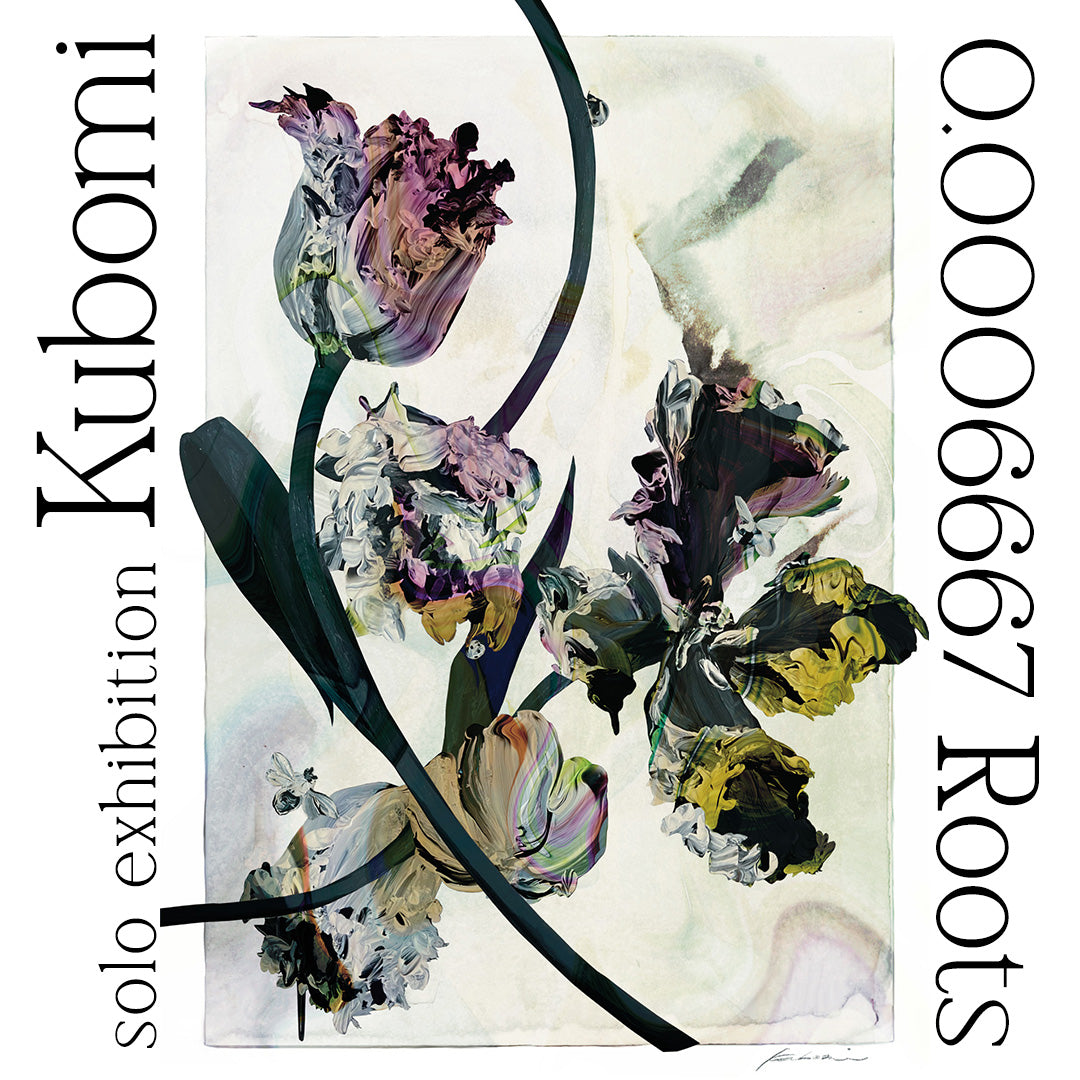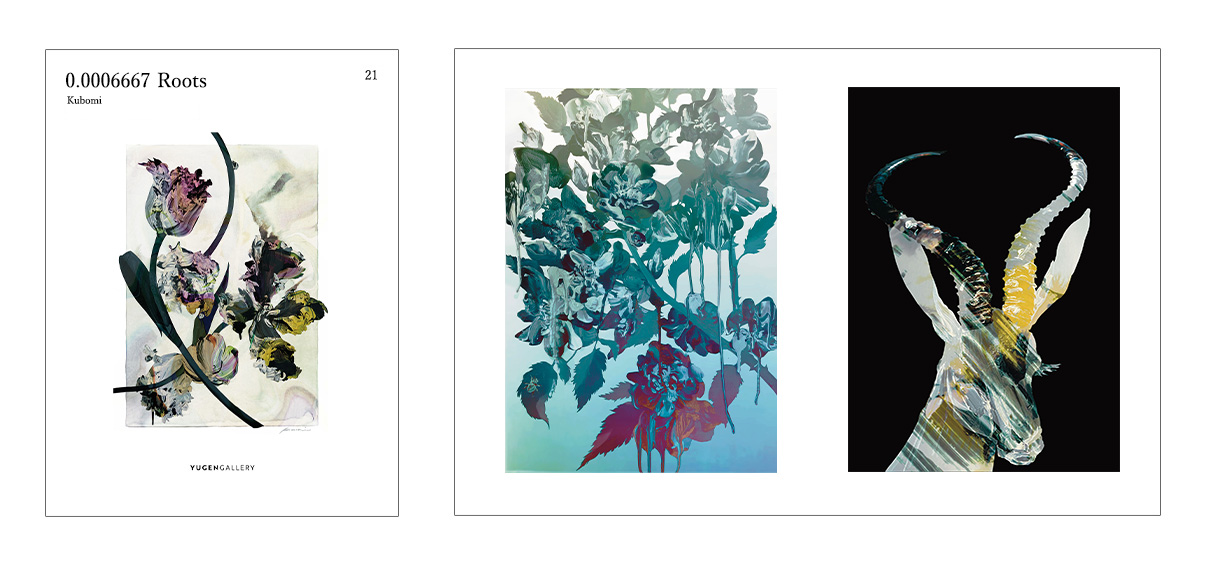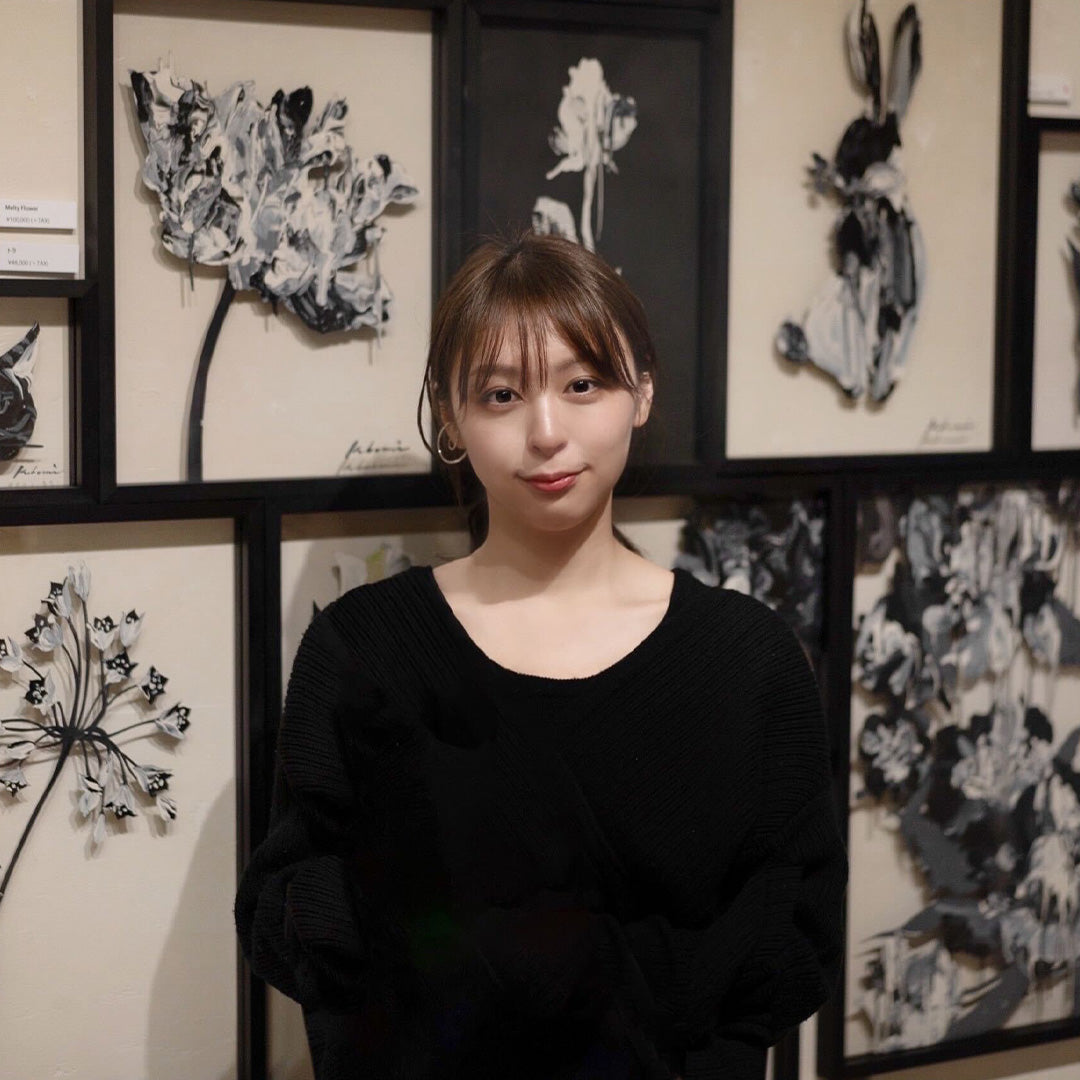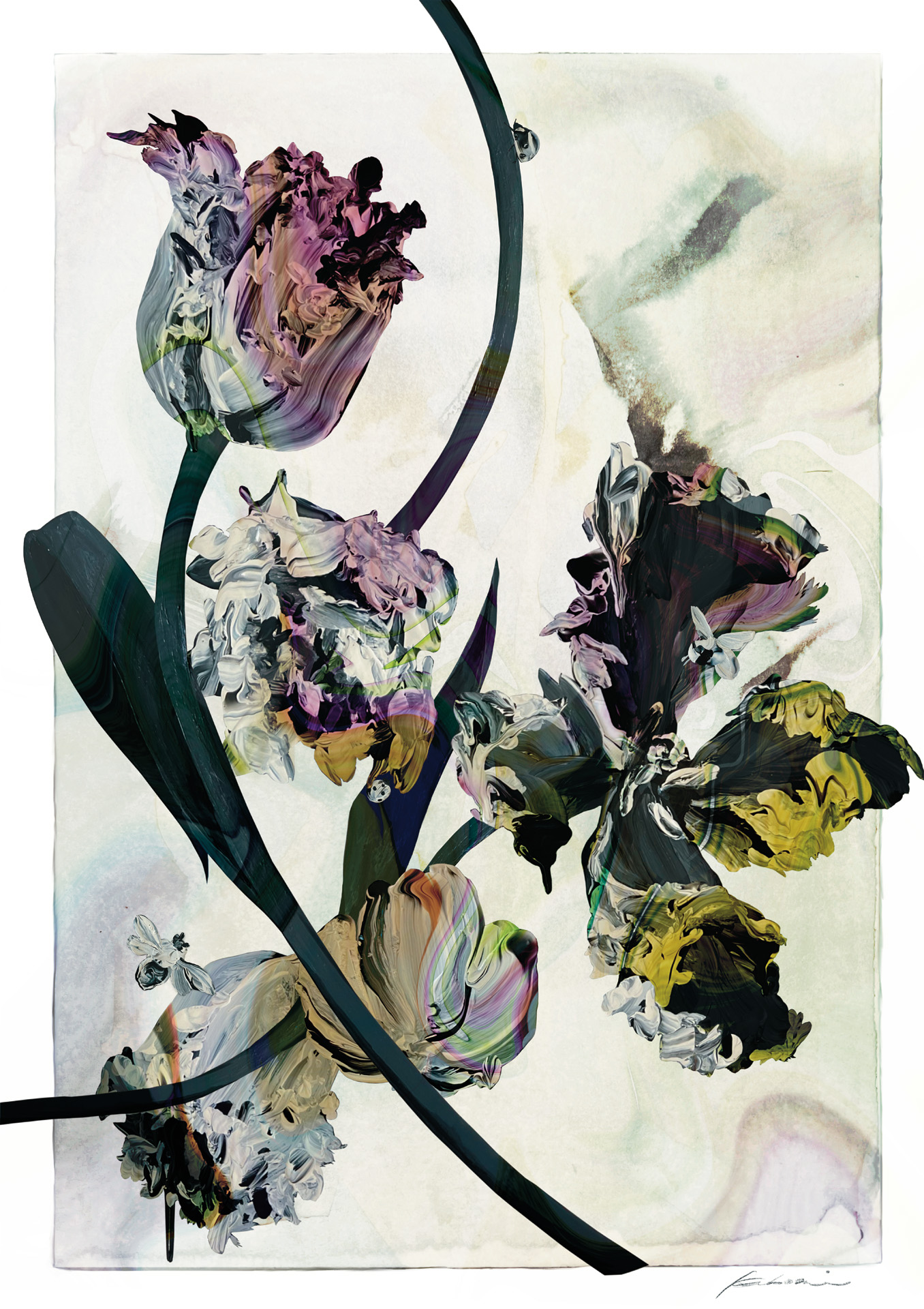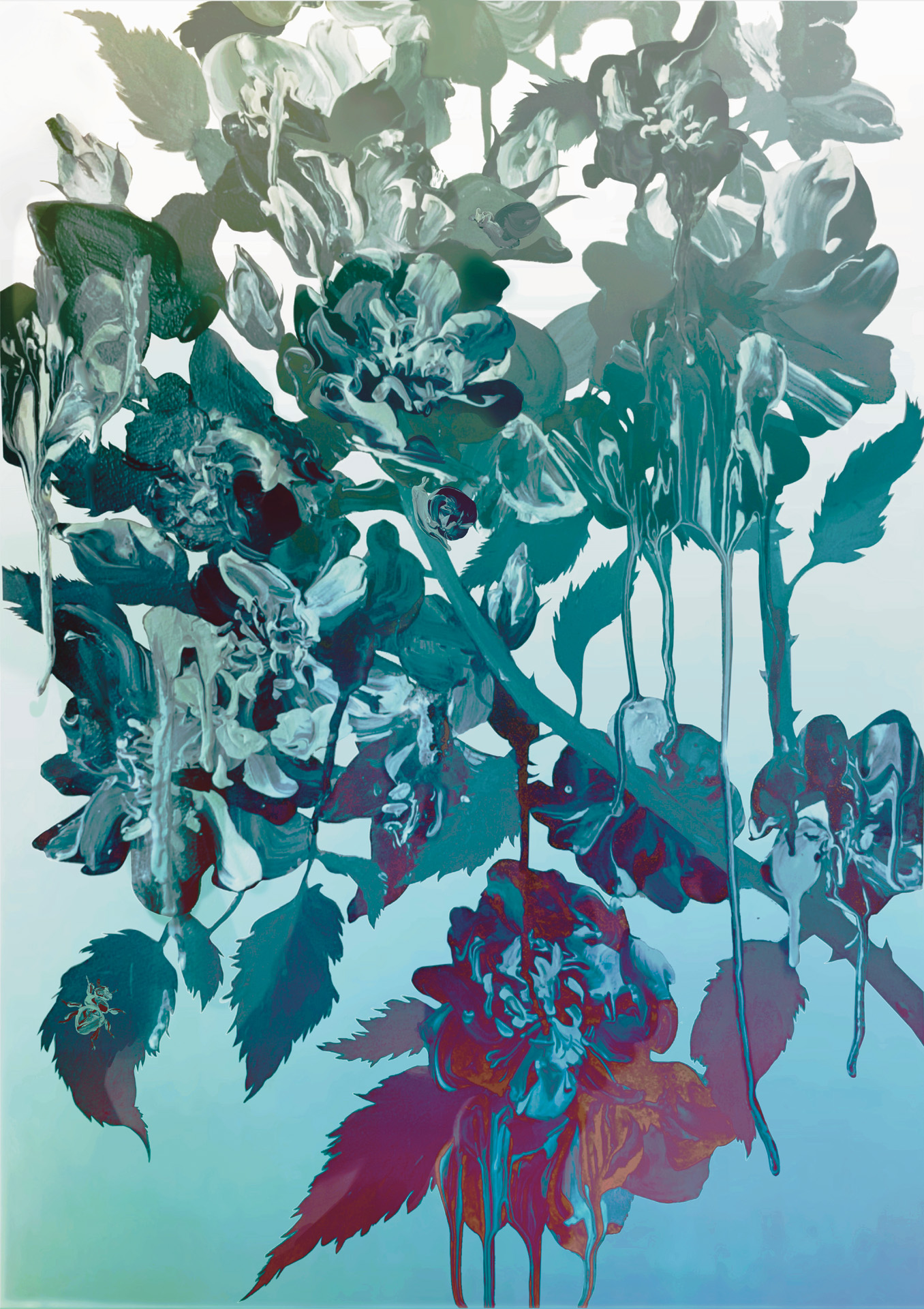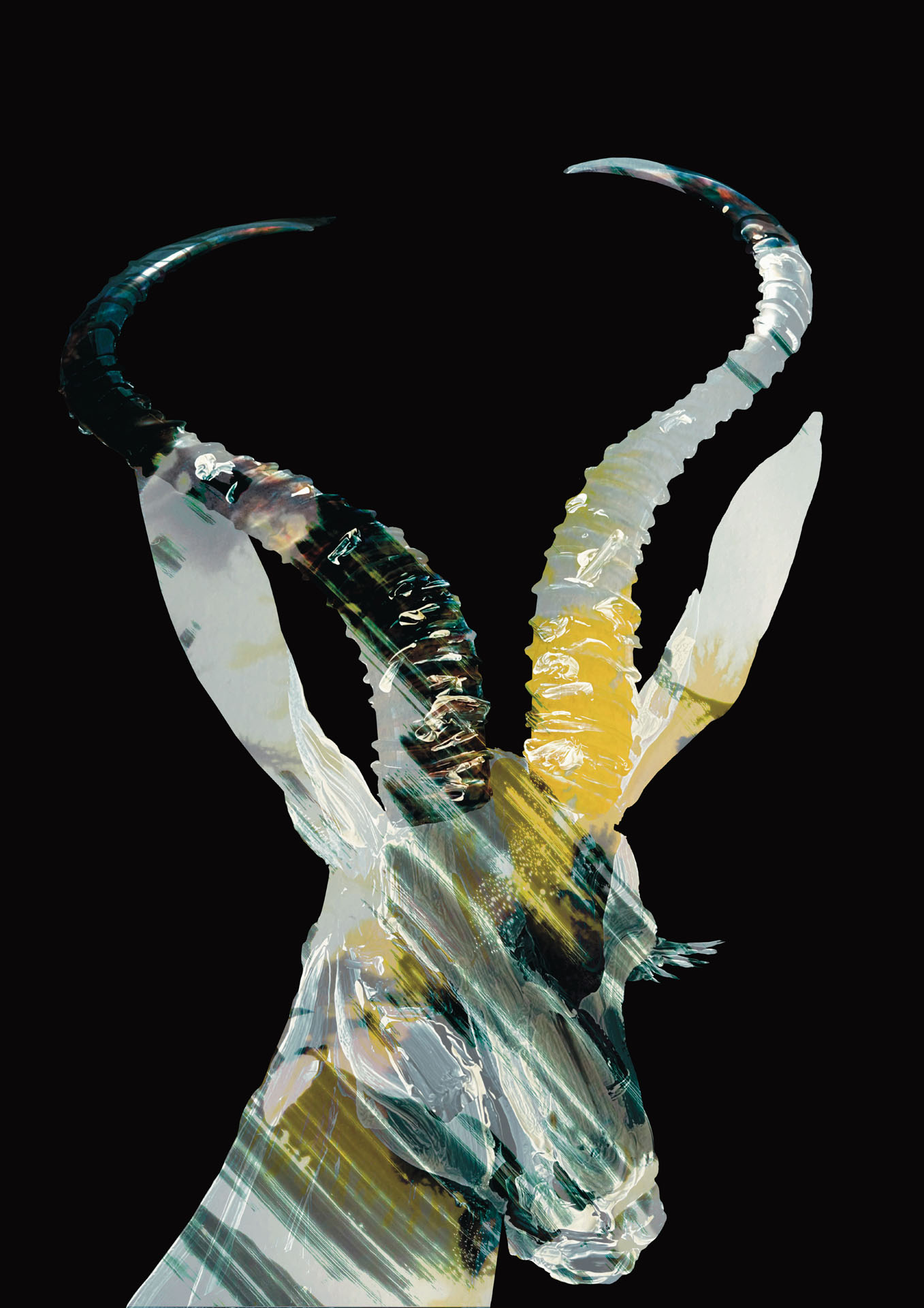Depicting the primordial energy of nature
A marble pattern that evokes the mass of paint and traces of the brush. The pattern swirls and appears as plants and animals. As the air flickers in the glittering sunlight, artist Kubomi expresses the process from when life is born to when it decays in a single painting.
By digitally converting analogue drawings and combining them with multiple materials such as abstract paintings and photographs, he creates abstract depictions of the primal energy of nature.
Born in Yokohama, Kanagawa Prefecture in 1993. Influenced by his grandfather, who painted watercolors as a hobby, and his father, who worked for a publishing company, he was familiar with art from an early age and aspired to be a painter. He studied to go to art university, but was shocked by the collections of Alexander McQueen and John Galliano when he was in high school.
He discovered that clothing, which he had previously only thought of as everyday items, could be "wearable art," and so he decided to pursue a career in fashion. He built up his career until he was appointed chief designer of a brand with a view to global expansion, and his experience in fashion shaped Kubomi's belief in creating "art close to life," rather than works that are displayed in museums.
Kubomi has had such an interest in plants and animals since she was a child that she would copy them from illustrated books. She clearly remembers the moment she started to work with flowers as a painter.
"When I tried to move an anemone that I had placed by a window in my house, I was shocked to see that the petals had all fallen off. The afternoon sun lit up the petals, leaving only the stem, and it looked very strange and fascinating."
At that time, she impulsively drew with paint and paper she had on hand, and since then, flowers have become an important motif for her. Nature, which is not created by humans, appears in different forms depending on the time, place, and person who sees it. The artist Kubomi was born from the feeling that the soul and energy of nature is an infinite existence that continues to burn while changing form. This memory nurtures her art.
The colors of consciousness and unconsciousness mix together
This exhibition, "0.0006667," proposes that memory is an element that constitutes life, and is also its roots. The magnification required to observe the movement and structure of cells and chromosomes under a microscope is said to be 1,500 times or more, and the number calculated by 1÷1,500=0.0006667 is given meanings such as "origin," "hometown," and "roots."
All animals, plants and all matter have conscious memories and memories engraved in their DNA, which come together to take shape, renew memory and undergo change and evolution. This exhibition will consist of approximately 10 new and old works that express the theme that "everything is memory."
Kubomi, who mainly uses analog painting with paint, has recently been working on mixed media techniques. This is a method of combining hand-drawn pictures with colorful abstract paintings using digital processing, and is an evolution that is happening to her, who often works based on monochrome tones.
In this exhibition, we will be showcasing works that overwhelmingly increase the number of colors compared to previous works and express multi-layered themes. Among them, the work "Massive Awake", which was only published once on SNS, is one of kubomi's largest works and is the highlight of this exhibition.
The mixture of colors displayed on a large scale evokes the dynamism of life and is the core of Kubomi's future expression. Although she has previously exhibited individual works in group exhibitions, this is her first solo exhibition featuring a full lineup of mixed media works.
The hope of remembering
Even the same seedlings will never bloom into flowers of exactly the same color. The environment, such as sunlight, the color of the sky, and the soil, become conscious and unconscious memories, and colors and shapes appear when they are mixed together. The overlapping of marble patterns and background colors represents the circulation of ecological energy. Kubomi's mixed media works delve deeper into the themes she pursues.
"When I paint, what feels right to me are the nameless colors that are a mixture of various colors. Even a red tulip has a mottled color, and when you shine red light on skin, a third color appears that is neither skin color nor red. So when I paint, I try to use abstract colors. That is my interpretation of nature."
Her expression that the beauty of flowers lies not only in their full bloom, but also when they wither, is incomplete if it is described as the "aesthetics of the moment of withering." She seeks to find beauty in the eternal process that continues from life to death, from consciousness to unconsciousness.
Our existence and values are separated, mixed, and painted over to never be dyed in a single color. Human empathy is a very fragile thing. In the colors and sparkles of sunlight and the fluctuations of the air, the truth constantly evades us, and humans cannot grasp it in their lifetime. We are in a perpetual process of exploration.
But there is no despair. Preserving memories provides clues to understanding that goes beyond empathy, and there is a sense of truth in that. Just as Kubomi witnessed beauty in the moment the petals fell.
